#heart nebula
Text

Fish Head Nebula & its surroundings © Oliver Carter
#space#fish head nebula#universe#astrophotography#planet#solar system#cosmos#nsnasa#night sky#stars#heart nebula
2K notes
·
View notes
Text



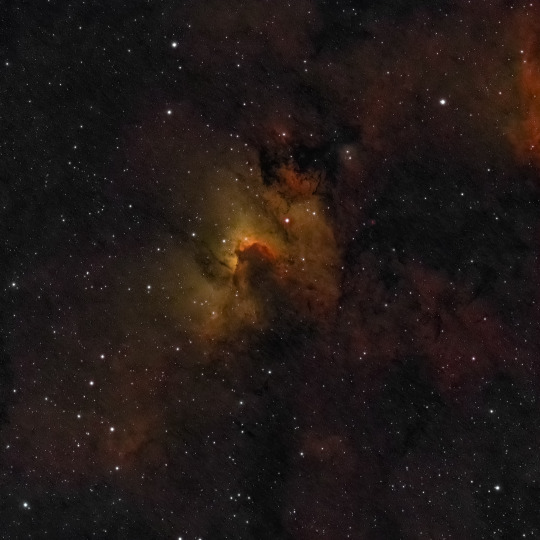


"We are made of star stuff." —Carl Sagan
l all taken by Roger Hyman
#space#stars#nebula#astrophotography#astronomy#nasa#night#galaxy#planets#universe#solar system#heart nebula#seven sisters#words#quotes#carl sagan#sky
2K notes
·
View notes
Text
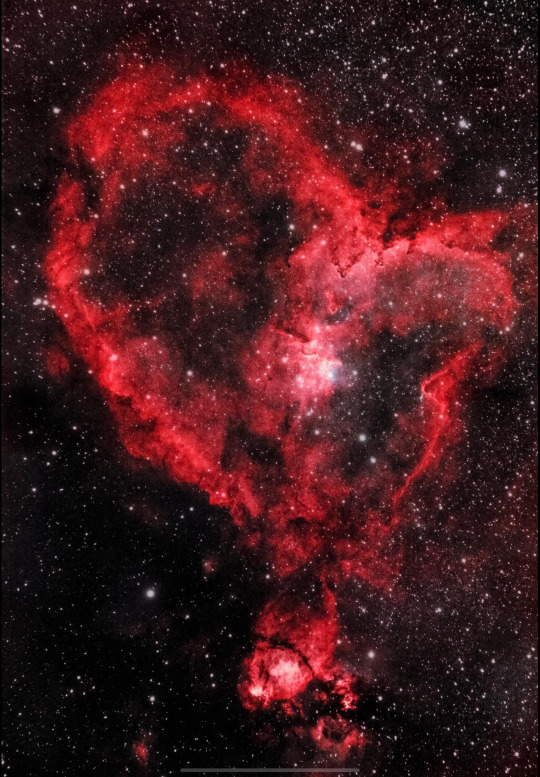
Heart Nebula
#astronomy#nasa#astronomers#universe#astrophotography#nasa photos#nasawebb#astrophysics#outer space#hubble space telescope#planetary nebula#nebula#heart nebula#galaxies#galaxy#our universe#cosmos#cosmic#space station#space travel#spaceship#spacecraft#space shuttle#space science#space exploration#space#james webb space technology#james webb space telescope#space photography#astro notes
678 notes
·
View notes
Text
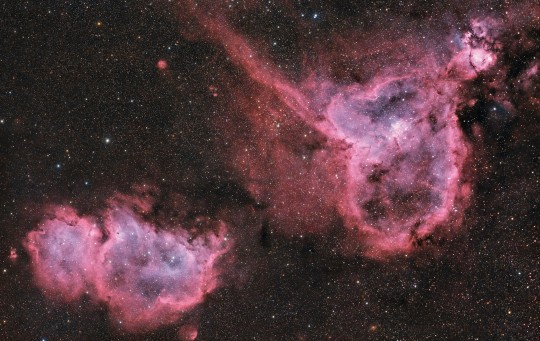
The Heart Nebula (IC 1805, right) and the Soul Nebula (Sh2-199, left) // Mathias
#astronomy#astrophotography#nebula#emission nebula#star-forming region#heart nebula#soul nebula#IC 1805#Sh2-190#Sh2-199#cassiopeia
68 notes
·
View notes
Text

SPACEMAS DAY 13 ✨🪐🌎☄️☀️🌕
The large emission nebula on the left of the image is catalogued as IC 1805 and looks somewhat like a human heart. The nebula glows brightly in red light emitted by its most prominent element, hydrogen, but this long-exposure image was also blended with light emitted by silicon (yellow) and oxygen (blue). In the center of the Heart Nebula are young stars from the open star cluster Melotte 15 that are eroding away several picturesque dust pillars with their energetic light and winds. The Heart Nebula is located about 7,500 light years away toward the constellation of Cassiopeia. At the bottom right of the Heart Nebula is the Fishhead Nebula.
Image Credit & Copyright: William Ostling, Telescope Live
#astronomy#space#science#universe#spacemas#day 13#nebula#heart#heart nebula#cassiopeia#constellation#star cluster#fish head nebula#emission nebula#hydrogen#light year#open star cluster#follow#like#reblog#the first star#the first starr#thefirststar#thefirststarr#nasa#apod#tumblr#blog#space blog#space tumblr
69 notes
·
View notes
Text

Ic 1805 - The Heart Nebula
Photographer David Joyce - Space From My Backyard: Pictures I Took With A Telescope
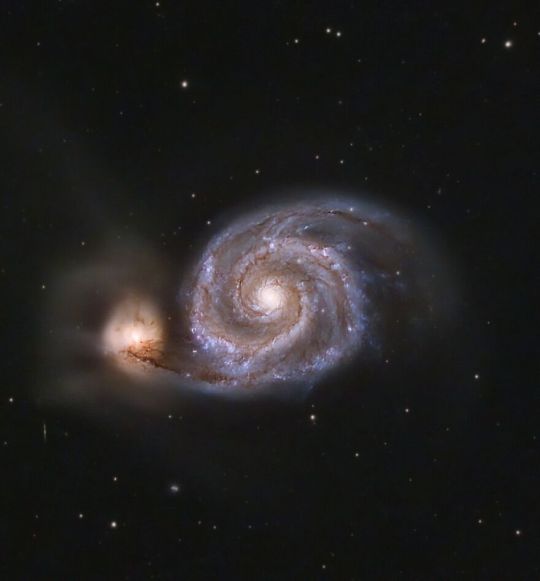
M51 - The Whirlpool Galaxy
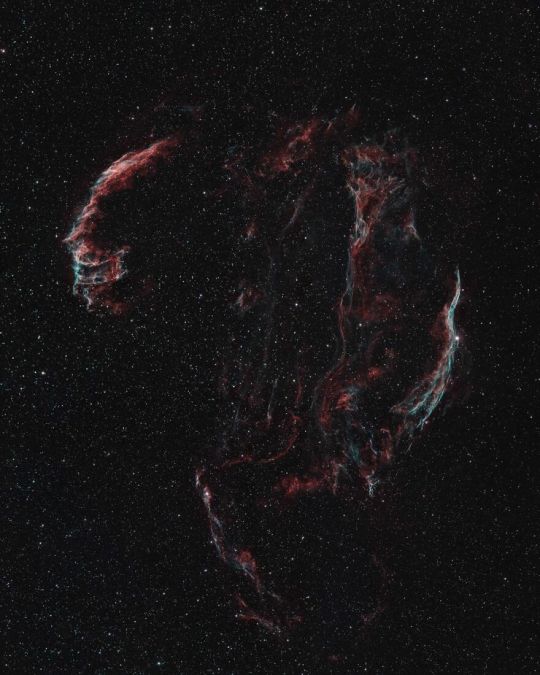
The Cygnus Loop - A 4

M81 - Bode’s Galaxy

Ngc2244 - The Skull Nebula/Rosette Nebula
#david joyce#photographer#astronomy#space#heart nebula#telescope#nebula#whirlpool galaxy#galaxy#cygnus loop#bode's galaxy#skull nebula#rosette nebula#nature
78 notes
·
View notes
Text

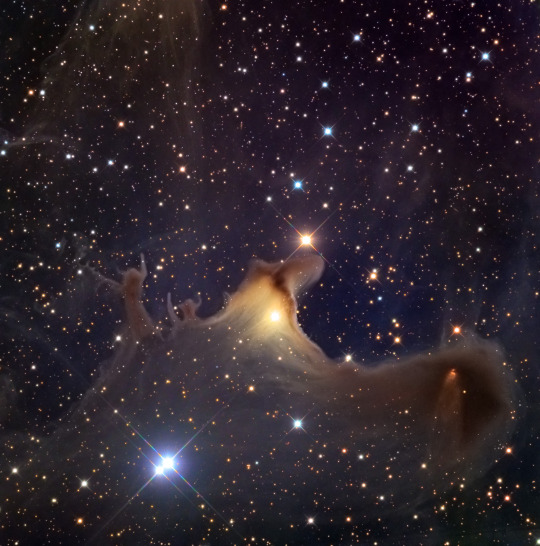
21 notes
·
View notes
Text


heart nebula (x2)
15 notes
·
View notes
Text

IC 1805, Heart nebula
Constellation of Cassiopeia
Distance: 27.800 ly
Aug 04 2023 -Montcada i Reixac
youtube
SONGS TO GET OUT OF OUR SYSTEM (I)
One night of magic rush
The start a simple touch
One night to push and scream
And then relief
Heartbeats,José González
#astrophotography#urban astrophotography#astrophotos#astro observations#cosmos#original photographers#astronomy#universe#original photographic works#heart nebula#Youtube
11 notes
·
View notes
Text

Into the Cosmic Heart, IC 1850 © Aleix Roig
#heart nebula#space#astrophotography#stars#night sky#universe#solar system#astronomy#cosmos#galaxy#planet
1K notes
·
View notes
Text
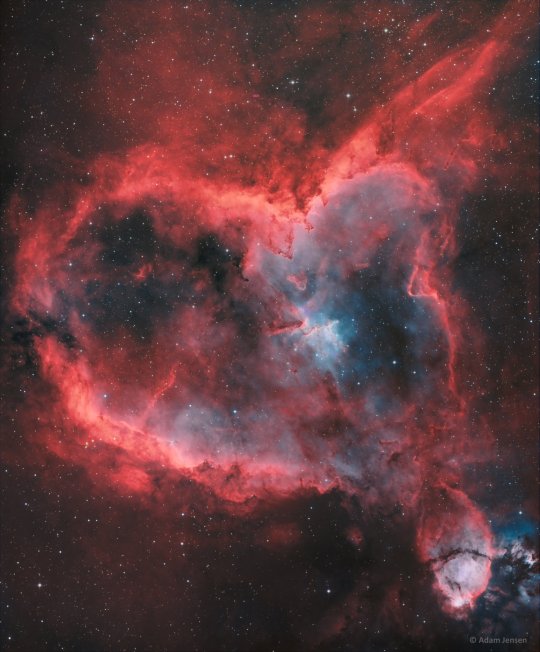
Be My Valentine l IC 1805 l Adam Jensen
#heart nebula#space#ic 1805#astrophotography#astronomy#nasa#solar system#stars#night#valentine's day#sky#galaxy#planets#universe
860 notes
·
View notes
Text
Vela Supernova Remnant Nebula
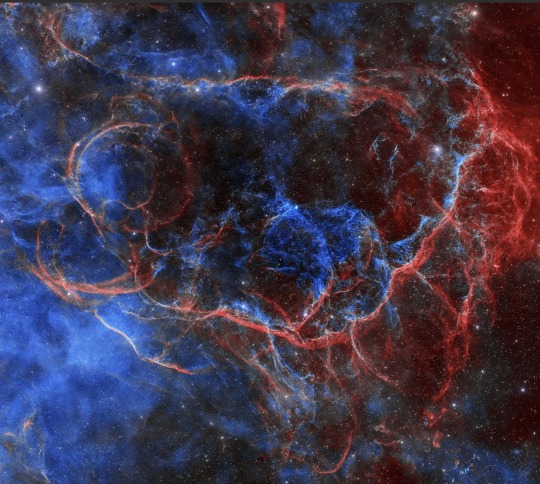
#nebula and quasar#heart nebula#planetary nebula#nebulosa#nebula#veil nebula#supernova#astronomy#nasa#astronomers#universe#astrophotography#nasa photos#astrophysics#outer space#nasawebb#hubble space telescope#astronews#i love astronomy#astrography#astro notes#astro community#astro observations#astroblr#astrology observations#astro boy#space travel#space science#space exploration#space
467 notes
·
View notes
Text
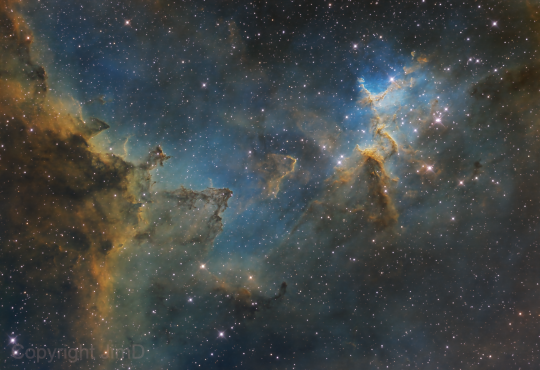
The inside of the Heart Nebula, IC 1805 // JimD
#astronomy#astrophotography#nebula#emission nebula#star-forming region#heart nebula#IC 1805#melotte 15#Sh2-190#cassiopeia
111 notes
·
View notes
Text
*Shoves my creechurs in here*

Now the ref sheets:





They are all very silly guys I swear (I'm crying for help i do not know what to do for The spiders wife aaaa)

(bonus gif)
#art#procreate#oc#maskleo#object oc#object#creature#monster#spider#chalk#nebula#nebulosa#heart nebula#animation#gif#im a tag enthusiast#i tag all all is tag
5 notes
·
View notes
Text

Best Greetings
Does The Moon Use Pythagorean Rule In Its Motion?
The moon daily displacement =88000 km and during 29.53 days (the moon day period) the displacements total be = 2.598 million km = 2π x 413600 km
The data tells us the moon orbital apogee radius should be 413600 km and also it tells, because the moon daily displacement (88000 km) is so long, the moon should revolve around the Earth through this apogee orbit its radius (413600 km) only and can't revolve around the Earth through any more near orbit…
Not Facts
The moon orbital apogee radius =406000 km only and the moon revolves around the Earth through near orbits and reach to perigee radius (363000 km).
How Can The Moon Do That?
The intelligent moon creates an angle (θ) between its motion direction and its orbit horizontal level by that the real displacement (L) through the orbit be less than (88000 km) because it be (L = 88000 km cos θ), as a result the total displacements be less than (2.598 million km) and that makes the moon orbital apogee radius to be decreased from 413600 km to 406000 km.
We should pay attention to the angle (θ), because this angle controls the moon motion features – where- with the angle (θ) increasing the real displacement (L) be shorter and the moon can revolve around the Earth through more near orbits – but –with the angle (θ) deceasing the real displacement (L) be longer and that pushes the moon far from the Earth to more far orbits.
The moon orbital motion depends on this angle (θ) it tells θ1 = θ0 +1.7
where (θ1) = today angle and (θ0) =yesterday angle
1.7 degrees be used as the moon daily motion degrees for the equation
Notice
As a result for the moon using of the angle (θ), the moon orbital radiuses be defined based on Pythagorean rule – because – the moon uses the angle (θ) in its motion – by that – Each point the moon passes shows this fact – and the radiuses be defined based on one another by Pythagorean rule – let's prove that
(363000 km)2 + (86000 km)2 = (373000 km)2
(373000 km)2 + (86000 km)2 = (384000 km)2
(384000 km)2 + (86000 km)2 = (392000 km)2
(392000 km)2 + (86000 km)2 = (406000 km)2 (error 1%)
Where
363000 km = The Moon Orbital Perigee Radius
373000 km = The Total Solar Eclipse Radius
384000 km = The Moon Orbital Distance
406000 km = The Moon Orbital Perigee Radius
Based on that – we see the moon motion uses Pythagorean rule
Thanks – please read
Physics Nobel Prize For Imaginary Ideas! (Revised)
or
Gerges Francis Tawdrous +201022532292
Peoples' Friendship university of Russia – Moscow
ORCID https://orcid.org/0000-0002-1041-7147
Facebook https://www.facebook.com/gergis.tawadrous
VK https://vk.com/id696655587
Tumblr https://www.tumblr.com/blog/itsgerges
Livejournal https://gerges2022.livejournal.com/profile
box https://app.box.com/s/47fwd0gshir636xt0i3wpso8lvvl8vnv
Academia https://rudn.academia.edu/GergesTawadrous
Publications http://vixra.org/author/gerges_francis_tawdrous
#saturn planet#saturn#planet saturn#astronomy#nasa#astronomers#universe#astrophotography#nasa photos#astrophysics#nasawebb#outer space#hubble space telescope#heart nebula#our universe#outer solar system#space science#astronaut#astro notes#astronomy photography#astrography#astro community#space travel#space station#united states#solar system#planetary science#science#science facts#spacecraft
2 notes
·
View notes
Text
I LOVVE SPACE SMMM‼️‼️

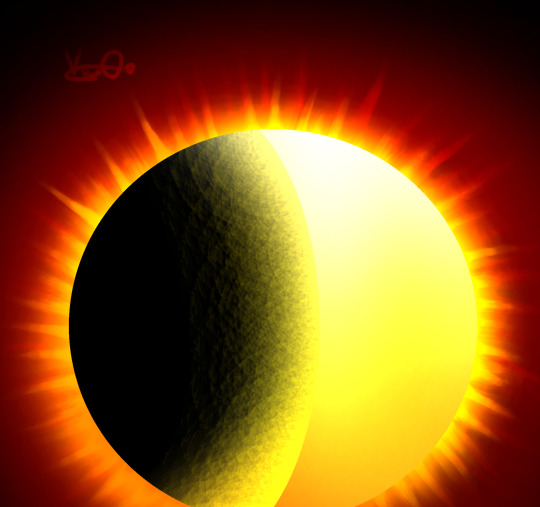
Im done wth it
3 notes
·
View notes